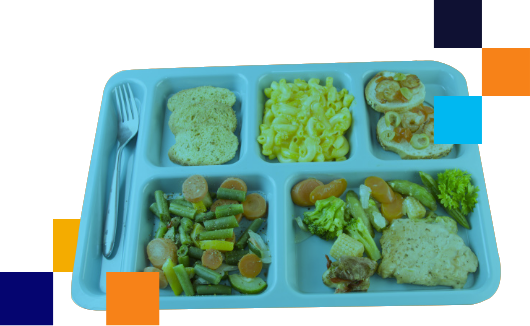NGPF'S 2022 ANNUAL REPORT
States committed to a semester long personal finance course for graduation
Today, 22.7% of high school students in the U.S. have guaranteed access to Personal Finance courses. This means that nearly 1 in 4 students are going to graduate in 2022 having received the education they need to be financially capable!
The live stats above show states that require a semester course in personal finance for graduation as of today. The 2023 annual report below was released in March 2023 and is composed of data up to March 2023. There may be discrepancies.


Florida: A Momentous Shift in the Sunshine State
Momentum for financial education continued in state capitol buildings in 2022, with twenty-six legislatures introducing sixty different bills to expand access to Personal Finance instruction.
After unanimous votes in both chambers of the Florida legislature, the Dorothy Hukill Financial Literacy Act made Florida the largest state yet to guarantee a personal finance course for all high schoolers.
Interpreting the Dorothy Hukill Financial Literacy Act
The law is a fitting tribute to the late State Senator Dorothy Hukill, who had long championed this effort. In order to make room for the course in students’ schedules, the law reduced the number of required electives from 8 credits to 7.5 credits. The 2023-2024 school year’s entering ninth grade class will be the first to be guaranteed to take the course before graduation under the new law, giving districts several years until full-scale implementation.
An earlier Florida law required all districts to offer a personal finance course as an elective, but only about 5% of high schoolers took that elective. This year’s landmark legislation closes the gap so that no matter a student’s zip code, they’ll take a one-semester course in personal finance.
Yanely Espinal, Next Gen Personal Finance
The work ahead
Before full-scale implementation begins, school districts throughout Florida will:
-
Await the Florida DOE’s implementation guidance regarding teacher certifications & standards
-
Choose which grade levels (e.g. 9, 10, 11, 12, or a range) in which to place the course and adjust masterboard schedules for students and teachers
-
Ensure personal finance teachers have access to high quality Personal Finance curriculum and professional development opportunities
-
Share implementation best practices through local & national networks
Philanthropic partnership creates incentives for in-depth Professional Development
Next Gen Personal Finance has teamed up with the Stiles-Nicholson Foundation to invest $1 million in teacher professional development in Florida in advance of full-scale implementation. This grant funding will provide Florida Personal Finance teachers stipends for participating in NGPF professional development including Certification Courses, OnDemand modules and Virtual PD sessions, all of which will be aligned to the new course and already offered at no cost.
Outside the fully implemented guarantee states**
When looking at national numbers, nearly 1 in 4 students currently have guaranteed access to a Personal Finance course. However, when we remove the 8 states with fully implemented statewide guarantees, we find that fewer than 1 in 10 students in the remaining 42 states have guaranteed access. It is critical that educators, community advocates, and lawmakers prioritize Personal Finance courses to increase access nationwide.

Gold Standard
(GUARANTEED ACCESS)
of high school students were guaranteed to take a standalone Personal Finance course of at least one semester* prior to graduation in 2022.
Silver Standard
(ELECTIVE OR CLUSTER ACCESS)
of high school students had access to a standalone Personal Finance course of at least one semester* either as an elective or as one option to fulfill a graduation requirement (cluster) in 2022.
Bronze Standard
(EMBEDDED ACCESS)
of high school students had access to some instruction in Personal Finance as part of another course in 2022.
NO FINANCIAL EDUCATION OFFERED
5.6%of high school students had no access to financial education in any of their courses in 2022.
WHEN ALL 17 STATES ARE IMPLEMENTED
Currently, only 8 of the 17 guarantee states have fully implemented their legislation statewide. 9 are in the beginning stages. When all 17 are finished with implementation, here’s what guaranteed access to Personal Finance will look like nationwide.
As evidenced by the movement of nine states in 18 months, statewide guarantees have the power to dramatically affect student access. Soon, 3 million students in Florida, Nebraska, Ohio, Rhode Island, Georgia, Michigan, South Carolina, New Hampshire, and Kansas will gain guaranteed access to a one semester Personal Finance course.
of high school students will have access when 17 states are fully implemented.
* One semester = at least 60+ consecutive instructional hours
** Alabama, Missouri, Mississippi, Virginia, Tennessee, Utah, North Carolina, Iowa
Access to Personal Finance education is still divided by locale, race, and socioeconomic status
While 1 in 10 students outside Guarantee States will take a standalone Personal Finance course prior to graduation, this number dips significantly among students in schools with higher percentages of Black or Brown students or students eligible for federal Free and Reduced Lunch programs. This inequity is also evident amongst schools by locale. Students across the country are not getting equitable access to Personal Finance education.
HIGH SCHOOLS OUTSIDE OF GUARANTEE STATES*
BLACK & BROWN STUDENTS
Access of Black & Brown Students who were guaranteed to take a standalone Personal Finance course prior to graduation

In schools with >75% Black and Brown student population
1 IN 20
students were guaranteed access
In schools with <25% Black and Brown student population
1 IN 7
students were guaranteed access
ACCESS BY LOCALE TYPE

1 IN 7
students in rural locales are guaranteed to take a standalone Personal Finance course.
1 IN 10
students in suburb + town locales
are guaranteed to take a standalone Personal
Finance course.
1 IN 20
students in city locales are guaranteed to take a standalone Personal Finance course.
* Guarantee States: States that have fully implemented legislation guaranteeing a stand-alone Personal Finance course for all students (Alabama, Missouri, Mississippi, Virginia, Tennessee, Utah, North Caroline, Iowa)
U.S. Public High School Students with Gold Access and Gold + Silver Access
U.S. Public High School Students with Gold Access and Gold + Silver Access
| State | Gold Access | Silver Access | Bronze Access |
|---|---|---|---|
|
Missouri* |
|
|
|
|
Utah* |
|
|
|
|
Tennessee* |
|
|
|
|
Virginia* |
|
|
|
|
Alabama* |
|
|
|
* Guarantee States
** Transitioning to Guarantee State
Note: State percentages may not add up to 100% because schools with no Personal Finance offerings are not reflected
Top 5: States with Top Growth from SY 2020-2021 to SY 2021-2022
- 2020-2021
- 2021-2022


The Path to Mission: 2030
The surge in new statewide financial education guarantees - from 5 states in 2018 to 17 states in 2022 - will continue as expected in the coming school years. However, the nationwide community of educators who are expanding access to Personal Finance courses locally must also accelerate.
Mission: 2030 - By 2030, ALL students will take a one semester Personal Finance course before graduating from high school

Ensure all students get a high quality financial education
With insights from bold educators who have helped guarantee Personal Finance courses for their students, Next Gen Personal Finance has built a 5-step roadmap for advocates.
Whether you’re starting from scratch, already have a Personal Finance elective in place, or are looking to expand your reach at the district or state level, NGPF’s How to Expand Access page has your back.
Methodology
- The data underlying this report is course catalogs from 11,927 public high schools serving 12,135,504 high school students nationwide. The most recent NCES data estimates that there are 15,100,000 public high school students in the U.S. today. Therefore, this data covers an estimated 80.4% of U.S. public high school students.
- Sources: 79.6% of school level data is from Dr. Carly Urban and her research team’s latest study (2022) at Montana State University. The remaining 20.4% of school level data is from:
- data collected as part of NGPF’s grant programs, prior research, and teacher surveys [14.5% of course catalogs collected],
- the previous year’s research (2020-2021 school year) from Dr. Carly Urban [5.1% of course catalogs], and
- teacher-reported, NGPF-vetted update requests on NGPF’s Got Finance? School Search Tool [0.8% of course catalogs collected].
- All school level data reflects the most recent data that NGPF currently houses for each school. While 80%+ of the report’s underlying data is from the most recent school year, some school data reflects the 2020-2021 school year or prior (where course catalogs were unavailable for the current school year).
- For the purpose of this report, all ‘Gold Standard School’ data includes both current Gold Standard Schools as well as FUTURE Gold Standard Schools. FUTURE Gold Standard Schools are high schools that have proven their intent to guarantee a standalone Personal Finance course for all their students by providing School Board Minutes and additional documentation for NGPF grant programs.
- A ‘Guarantee State’ is a state with a statewide, standalone, one semester (+) Personal Finance graduation requirement. Currently, NGPF recognizes 8 states (AL, IA, MS, MO, NC, TN, UT, VA) as ‘Guarantee States’ and 9 states (FL, NE, OH, RI, GA, MI, SC, NH, KS) as future ‘Guarantee States,’ as they have begun to transition schools to new graduation requirements.
- Year over Year Growth shows 2020-2021’s total number of students with guaranteed access to a standalone Personal Finance course vs 2021-2022’s total number of students with guaranteed access to a standalone Personal Finance course.
- Paths to Mission: 2025 and Mission: 2030 growth models assume:
- states with the largest percentage of students attending ‘Gold Standard Schools’ in the 2021-2022 school year will approve legislation guaranteeing Personal Finance courses soonest.
- increasing numbers of states will add personal finance course guarantees each year, and
- grassroots advocacy (schools and districts independent of state guarantees) will guarantee access for an additional:
- 100,000 students from 2022 to 2023,
- 200,000 students from 2023 to 2024,
- 300,000 students from 2024 to 2025, etc.











